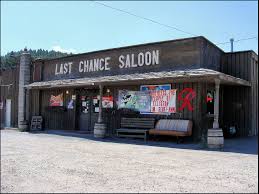Picture this: you are a Chemistry teacher in a school in Colorado; it’s Friday and you give kids a test; some kid fails, what do you do on Monday? You move on –“I’m sorry kid, I hope you can figure it out between now and the next test”. It sounds wrong yet awkwardly familiar, doesn’t it? On a blustery morning in London we caught up with Jon Bergmann and Aaron Sams, the Chemistry teachers in Colorado who came up with the concept of the flipped classroom. “The simplest way to explain flipped learning or the flipped classroom is the idea of taking direct instruction out of the group learning space and shipping it into the individual learning space”, says Aaron. By recording the content of each lesson and asking students to watch that as homework, they were able to free up class time to do more hands-on learning. From then on, the question became “Why does every kid have to do the same thing on the same day?” Why not have them learn at their own pace and master material before they progress to the next thing? “When a kid doesn’t understand A, they can’t do B, they can’t do C, D is impossible. (…) In the mastery system, if they got to the end of a unit and couldn’t pass the test, we made them stay there until they learned it”. Jon and Aaron are sure not to take credit for the mastery model; the idea originated in the 70s, its implementation marred by the difficulty of having teachers repeat themselves ad infinitum and set up multiple assessments to evaluate different objectives at the same time. Technology has made mastery possible: “We can create videos for the content, the direct instruction and [students] can watch it whenever, and there are learning management systems that can randomise tests and do some amazing things”.
Our conversation ebbs toward the changing role of teachers: we no longer live in a society deprived of information; kids can access stuff anywhere any time on their own. “What do they need their teacher for?” asks Aaron. Not to deliver content, but “to help them wrestle with what they’ve already learned and take it to a deeper level”. I believe that teachers are reflective creatures by nature: I wouldn’t just flip my classroom on a whim but in the knowledge that either something I’m doing is not working, or there’s something going around that promises better results and greater fun. An infographic based on a survey of the Flipped Learning Network reveals that 80% of flipped teachers report an improvement in student attitude, and 67% an improvement in test scores. Have teachers become more creative, more reflective when flipping the classroom? I ask. Aaron takes this up: “These teachers are engaging in play, they are having fun with what they are doing; a lot of teachers that we’ve talked to have said This is a way for me to get excited about my craft again. It really regenerates them, to want to be creative, to want to experiment with their own content”. Two teachers making videos together engage in rich conversation; if the next step is to make that material publicly available online –“it’s opening up the doors of your classroom to the whole world”– that conversation becomes even more powerful as they think through the pedagogy.
One more thought I leave you to ponder: flipped learning is a grassroots movement; as Kari Arfstrom puts is “It’s not coming from Washington, it’s not coming from the State Capitol, it’s not coming from someone high up who’s got three PhDs and six books to their name. This is coming from teachers in their community who happen to hear about this philosophy (…) It’s not someone saying This is what you have to do in your classroom; this is something teachers want to do in their classroom”.




[…] and resources to successfully implement Flipped Learning’. I wrote a blog post earlier this year, About flipped learning which will give you a rough idea of what flipping entails, should you need it. In September, Kari […]